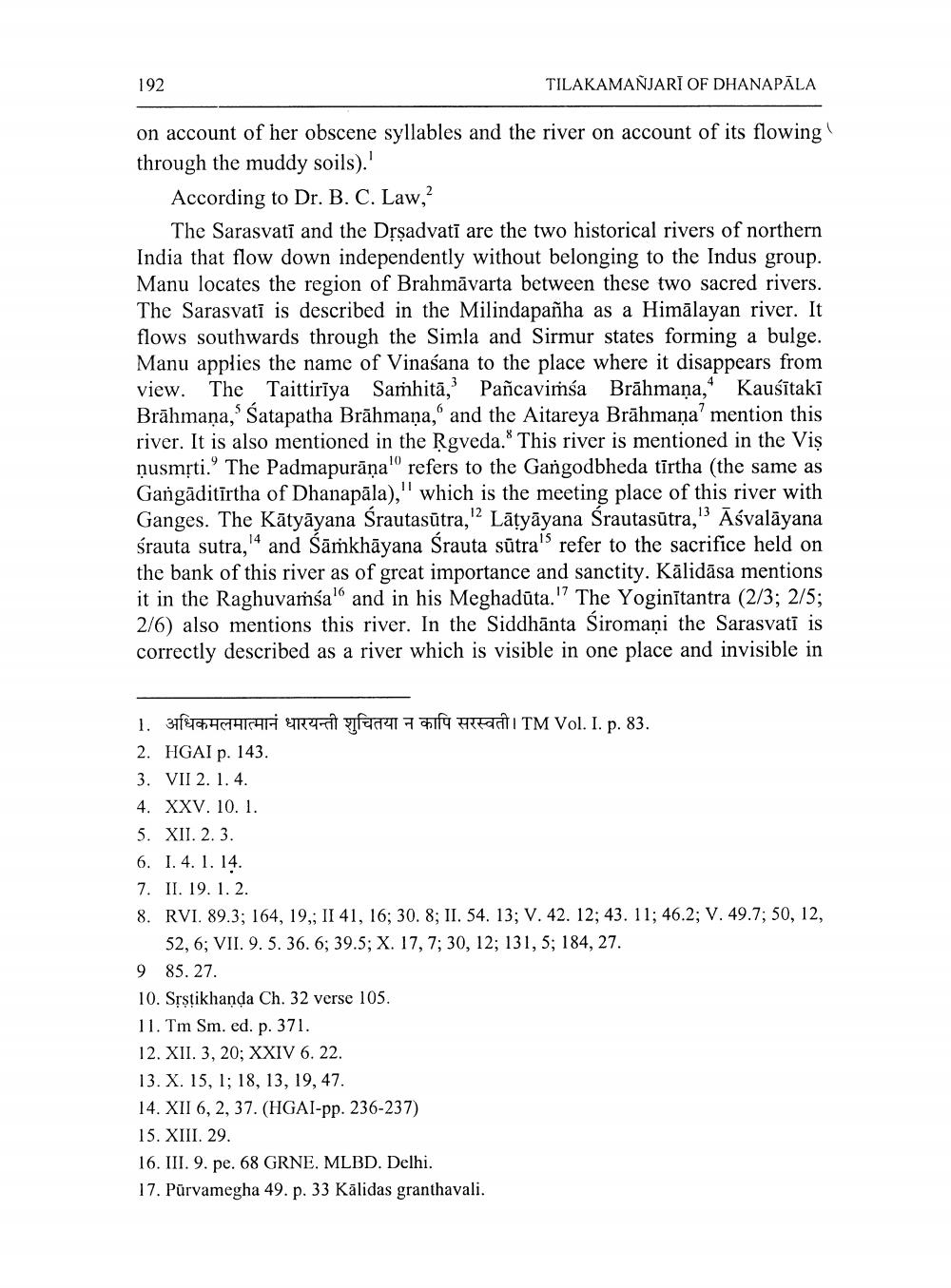________________
192
TILAKAMANJARĪ OF DHANAPĀLA
on account of her obscene syllables and the river on account of its flowing through the muddy soils).'
According to Dr. B. C. Law,
The Sarasvati and the Drşadvatī are the two historical rivers of northern India that flow down independently without belonging to the Indus group. Manu locates the region of Brahmăvarta between these two sacred rivers. The Sarasvati is described in the Milindapañha as a Himālayan river. It flows southwards through the Simla and Sirmur states forming a bulge. Manu applies the name of Vinaśana to the place where it disappears from view. The Taittirīya Samhitā, Pañcavimśa Brāhmaṇa, Kausītakī Brāhmaṇa, Satapatha Brāhmaṇa, and the Aitareya Brāhmaṇa' mention this river. It is also mentioned in the Rgveda. This river is mentioned in the Vis ņusmrti.' The Padmapurāņa' refers to the Gangodbheda tīrtha (the same as Gangāditīrtha of Dhanapāla)," which is the meeting place of this river with Ganges. The Kātyāyana Srautasūtra,"2 Lāțyāyana Srautasūtra," Āśvalāyana srauta sutra, and Sāmkhāyana Srauta sūtra refer to the sacrifice held on the bank of this river as of great importance and sanctity. Kālidāsa mentions it in the Raghuvamsal and in his Meghadūta." The Yoginītantra (2/3; 2/5; 2/6) also mentions this river. In the Siddhānta Siromani the Sarasvati is correctly described as a river which is visible in one place and invisible in
1. 37804614IHR EUR41 year of taciti TM Vol. I. p. 83. 2. HGAI p. 143. 3. VII 2. 1.4. 4. XXV. 10.1. 5. XII. 2. 3. 6. I. 4. 1. 14. 7. II. 19. 1. 2. 8. RVI. 89.3; 164, 19; II 41, 16; 30.8; II. 54. 13; V. 42. 12; 43. 11; 46.2; V. 49.7, 50, 12,
52, 6; VII. 9. 5. 36. 6; 39.5; X. 17, 7; 30, 12; 131, 5; 184, 27. 9 85. 27. 10. Srstikhanda Ch. 32 verse 105. 11. Tm Sm. ed. p. 371. 12. XII. 3, 20; XXIV 6. 22. 13. X. 15, 1; 18, 13, 19, 47. 14. XII 6, 2, 37. (HGAI-pp. 236-237) 15. XIII. 29. 16. III. 9. pe. 68 GRNE. MLBD. Delhi. 17. Purvamegha 49. p. 33 Kālidas granthavali.




